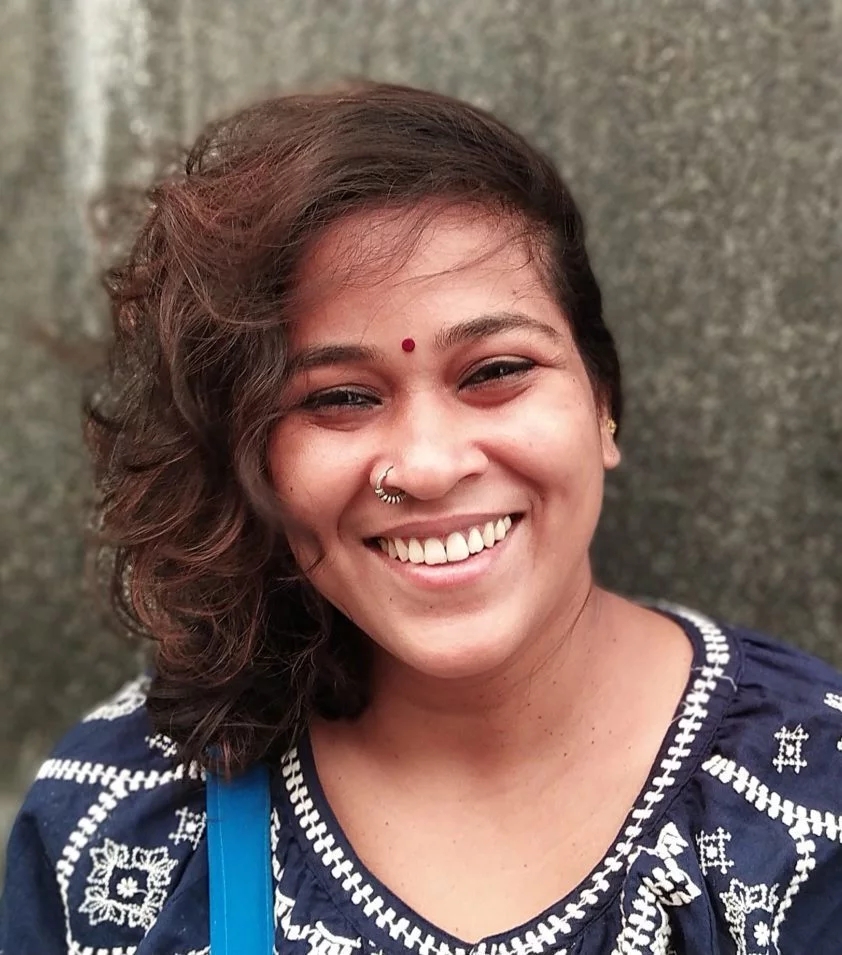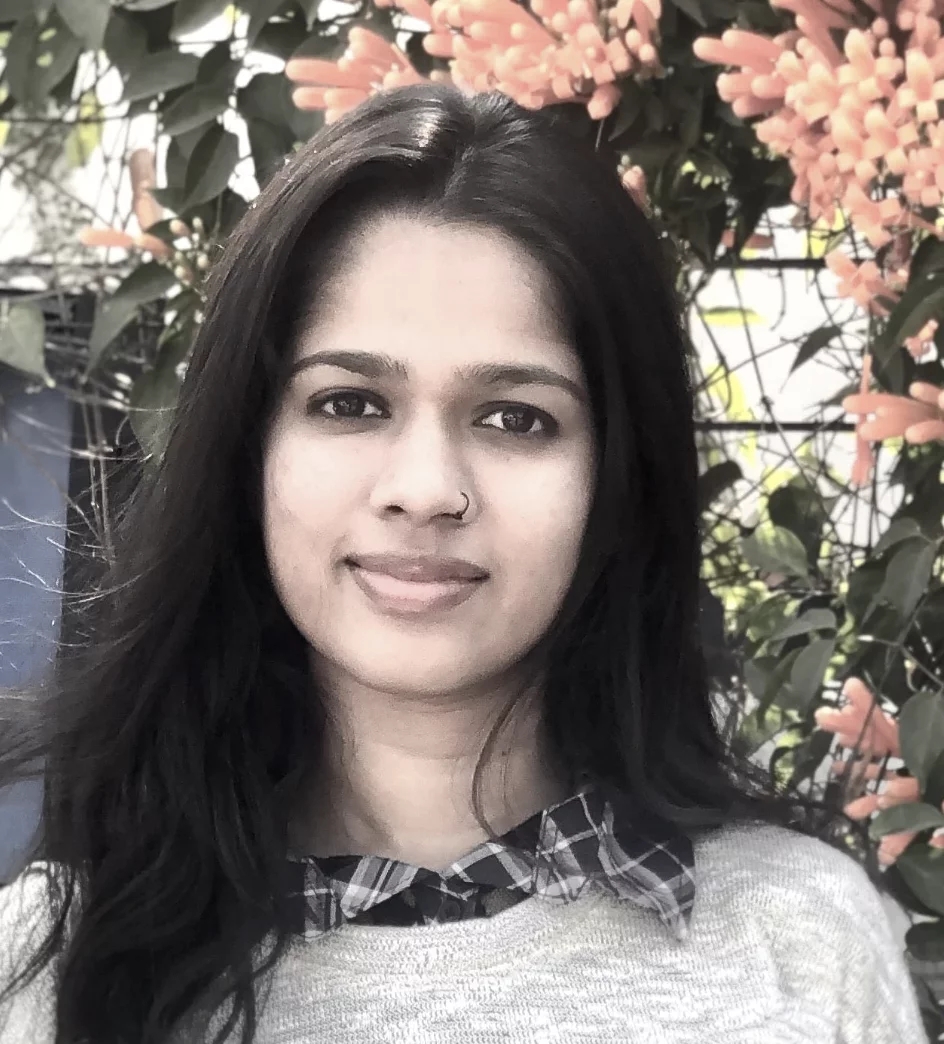WORDS BYShruti Tharayil
ILLUSTRATIONS BYRupali Goel
Starting from the monsoon and until the winter in Ramanavalsa, in the East Godavari district of Andhra Pradesh, Ammamma walks with other women to their forest to gather seasonal mushrooms, bamboo shoots, green leafy vegetables and winter tubers. Towards the end of the monsoon, she also sets up the backyard vegetable garden with a wide range of crops like brinjals, pigeon pea, squash varieties, tomatoes and more. The vegetable garden is prepared for the dry summer when gathering will be limited to the immediate backyard.
The onset of spring brings the celebration of Chintha Chiguru Pandaga, the festival of tender tamarind leaves in Ramanavalsa. This is a village of approximately 40 households, remotely located on top of the mountains of Maredumilli, Andhra Pradesh, and is home to the Konda Reddi Adivasi community. To reach Ramanavalasa, you have to trek up the mountain for an hour and a half, through the thick Eastern Ghats forests, where you will be welcomed by huge tamarind trees with tiny houses dotted in the understory.

Chiṇtha Chiguru Pandaga is a festival I witnessed here, during which everyone from the village, elders and children alike, gather under the trees to harvest tender tamarind leaves. The leaves would then be shared amongst the villagers, to be cooked into various dishes over the next couple of weeks. Ammamma shared how the trees were there since the times of her grandparents. The ancient tamarind trees were the connecting thread for the village.
As a young woman in her early 20’s who was starting her own non-profit and had been engaging with the village’s communities as part of my work, I was fascinated day after day with what I was discovering about the Konda Reddi way of life. Growing up in a concrete jungle as someone for whom gathering meant bunking school with peers and jumping across the school fence to pluck jujube fruits, watching these women gathering food from their immediate ecosystem, in sync with the rhythms of the season, introduced me to a whole new worldview of interbeing.
Ammamma, as she was fondly called, was my gracious septuagenarian host in Ramanavalsa. I knew her only as Ammamma as she never revealed her “real” name to us. She often joked that we wouldn’t know how to pronounce her traditional name properly anyway.
Similar to Chintha Chiguru Pandaga, women from different communities of Telangana celebrate Bathukamma, a festival where they create consecrated forms of the goddess using seasonal wildflowers. Bathukamma arrangement predominantly revolves around the wild flower celosia (Botanical name: Celosia argentea, also known in Telugu as gunugu puvvulu) that grows abundantly in the farm and common lands of the dry, semi-arid landscape of Telangana. Early in the morning, men go to gather the flowers, which later in the day are used by the women to create Bathukamma. Bathukamma was an integral part of the Telangana movement for separate statehood. I vividly remember watching women in public dancing around Bathukamma during the pinnacle of the movement from 2012-2013.

“Bathukamma connects us to our land. We can only create her if our land gives us the flowers. Our fight for Telangana is to reclaim our identity and both Bathukamma and our land are our identities,” said Satyamma, my interlocutor who introduced Bathukamma to me in 2013, as part of my work engagement documenting the village deities of Telangana and their relationship to the land and other natural resources. Spending time with Satyamma at her village, Ismailkhan Petta in the Sangareddy district, I got to participate and talk to several women about their relationship with Bathukamma.
I first met Mallikarjun, a young man from the Chenchu tribe, a few years ago during a field visit. Over the years, I have admired his fantastic storytelling skills and have been inspired by his passion for intertwining activism with his nuanced insights into Chenchu folklore and practices. Chenchus fall under the Particularly Vulnerable Tribal Group (PVTG) and are heavily dependent on the forest as a community. During one of my visits, I learned that a particular variety of grass, called yedumundla gaddi in the Telugu dialect of the tribe, used to grow abundantly in their forest and was used for thatching huts (gudisha). With the introduction of concrete houses, the ancient knowledge of building the traditional Chenchu gudisha is fast disappearing. Along with the knowledge of building the gudisha, knowledge of the usage of the grass is also disappearing. Mallikarjun explained to me how building even one gudisha would be a communal activity, with the community gathering the grass from their forest and building the house together. With the introduction of pucca houses, the communal gathering of the grass has reduced, which has also led to the grass not being harvested by them which has in turn led to non-regeneration of the grass. Today, despite attempts at reviving their knowledge system around building the gudisha, the availability of the grass has gone down. Mallikarjun says that younger generations aren’t even aware of how to recognize the grass anymore.
It is not just the Chenchus and other non-urban communities who experience this loss of knowledge. My mother, who lives in Thrissur, shares about kuronthotti – an uncultivated herb grown commonly in the tropical landscape of Southern India. Kuronthotti, as it is known in Malayalam (Botanical name: Sida cordifolia), is used in the last trimester of pregnancy to build strength. Traditionally, women of the house would step out into their backyard and forage kuronthotti leaves and brew it into a kashayam for the pregnant person. Today, kuronthotti is no longer growing wild in backyards. The rampant concretization of the land has led to the fast decline in the growth of uncultivated greens. Today, if one has to get kuronthotti, one has to go to the vaidhyar (local herbalist) shop and the knowledge of its usage is no longer alive except amongst the older generations.
In an overly fast paced way of life, gathering to forage can be a way to slow down and reconnect to the land. With our cities’ ever changing skylines, connection to the land has come down to an hour-long drive to the outskirts of a village or a forest. The pandemic was a rude awakening from this reality which pushed urban dwellers to seek conscious ways to reconnect to the land. There is something primal about gathering from nature as a collective practice that connects us back to our evolutionary roots.
If you pay close attention, you don’t need ancient tamarind trees to celebrate nature. Just step into your terrace gardens, backyards or even a patch of land growing wild in the neighbourhood and practice a ritual of gathering, along with your family and friends. Gather what is growing wild, because it is only when we gather from nature that the ecosystem regenerates and thrives.
There are always conscious ways to forage! Some tips:
- Before you step out to forage, always remember these basic principles: Not all plants are edible. Not all edible plants are palatable. Not all medicinal plants are edible. Different parts of a plant can be edible or poisonous.
- Every plant has a use. It is our limited knowledge that doesn’t understand its uses and properties in their entirety. Try and stay curious before you dismiss any plant.
- Notice the patterns and colours of the plants. Notice the time when the flower blooms. For instance, are the leaves nyctinastic?
- Smell the leaves. Does the smell remind you of something you have smelled or eaten before?
- Where are the plants growing? How does the soil look? Can you see the roots of the plant?
- Do your research before you consume a new wild plant. Ask your elders, neighbours, domestic workers, random strangers, maybe even children. In my experience, it has been elders from different communities who have been the best repositories of knowledge about plants as food and medicine. One of the biggest unlearnings I had was about the depth of knowledge children hold. Irrespective of their age, children hold insights about their immediate ecology. I have learnt about many wild edible fruits and wound healing plants from them.
- Take small steps. Consume a new plant in small quantities. People’s bodies respond differently to plants. Some may induce allergies or indigestion.
- Remembering a plant’s botanical name and properties (especially when local cultivars can diverge so widely) might contribute to invigorating discussion. However, rewilding happens only when you spend more time in nature and engage with the plants on a daily basis. Adding wild edibles to your daily diet ensures a thriving knowledge system.
- While foraging, always harvest the tendermost leaves. Refrain from uprooting the entire plant as it disrupts the ecology and micro-climate.
- Lastly, forage only what you need and leave the rest for other beings that share the ecosystem with us.


